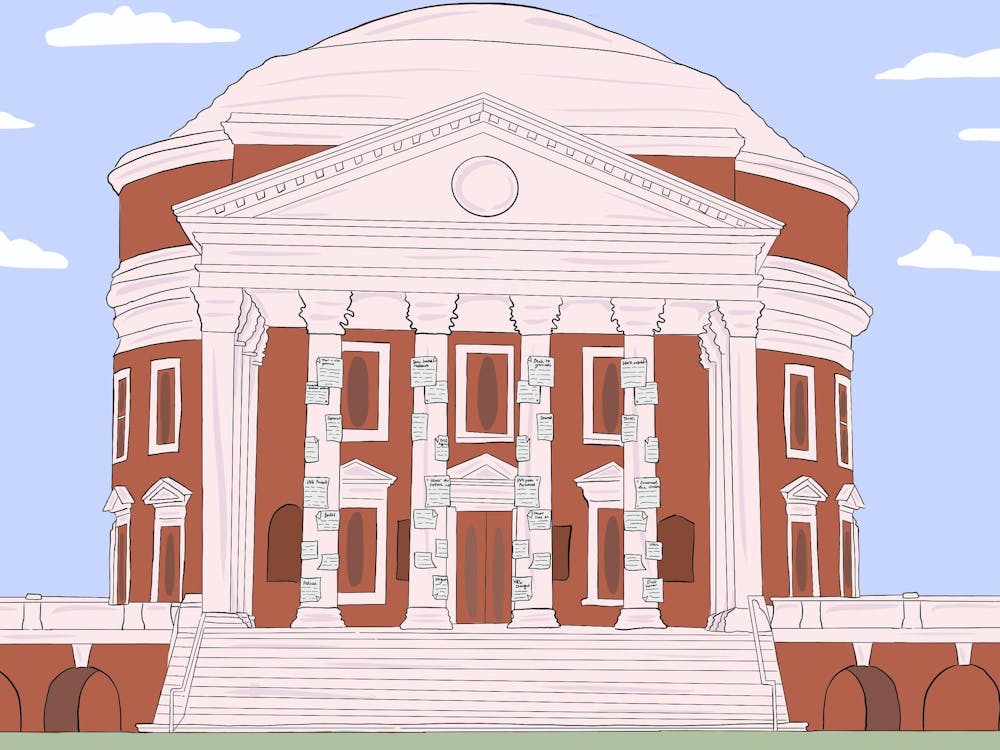The University recently announced that its Honor the Future campaign, launched in 2019 under former President Jim Ryan, raised $6 billion — surpassing its original goal by more than $1 billion and marking the largest fundraising effort in University history. This milestone reflects an extraordinary level of alumni and donor engagement, and it has already supported a range of ambitious scholarships, research projects and academic initiatives on Grounds. These successes underscore how fundraising does not just come with resources, but also the responsibility for leaders to direct them in a way that prioritizes student experiences and makes the University’s resources more accessible to the community.
A campaign of this magnitude is an extraordinary feat — one which will inevitably establish some internal stability in a moment of vast political uncertainty within higher education. To put this financial stimulus into perspective, two-thirds of all universities around the country currently exhibit financial stress as a result of declining revenue, enrollment or research funding. This does not take into account the sky-high legal settlements following other universities’ federal investigations. While vast financial threats are becoming commonplace in the realm of higher education, the Honor the Future initiative offers the University community a unique opportunity — the ability to focus on internal betterment, rather than solely being preoccupied by the University’s sustainability writ large.
Of the campaign’s 250,000 individual donors, over 120,000 were alumni, and the vast majority of gifts were under $10,000, highlighting that the campaign’s momentum came from a broad community of supporters rather than a few marquee philanthropists. This diversity in donors is crucial for the University’s independence and public university status, and also creates an imperative to ensure that the financial priorities reflect a wide community rather than the interests of a handful of wealthy individuals.
In no small part is this unparalleled fundraising success owed to Ryan who intimately understood both the fundraising process and the necessity for careful and community-based stewardship of the resources gained therein. The next leader of this University will inherit not only an endowment with billions of dollars in fundraised money, but also the responsibility of balancing the ambitions of high-profile initiatives with everyday needs.
For example, investments in major projects like the School of Data Science or Shumway Hall are essential and can elevate the University’s national standing, but without proportional attention to everyday student needs, these initiatives risk reinforcing inequities on Grounds. Similarly, student-facing resources like expanding scholarships and mental health programs may not generate headlines, but they directly impact thousands of students’ ability to thrive. By making these trade-offs deliberately and transparently, the next president can uphold the University’s public mission while honoring the collective intent of the campaign’s broad donor base.
Some might argue that the University already has sufficient safeguards in place to prevent any one donor or administrator from exerting outsized influence. The University’s governing body, the Board of Visitors, approves spending policies, the University of Virginia Investment Management Company manages the endowment’s investments and some donor restrictions legally bind funds to their intended purposes. From this perspective, the risks of asymmetrical priorities between administration and community may be overstated, since administrators cannot simply redirect a scholarship endowment toward a new building or funnel unrestricted funds into projects without oversight. Yet, while these safeguards exist, they do not guarantee that the use of the University’s newfound wealth will reflect the interests of its full community.
The necessary ethos of careful stewardship and accountability within the campaign must be grounded in a genuine commitment to shared governance, a value which has been threatened at our University in recent months. The sheer scale of the Honor the Future campaign underscores why decisions about those resources cannot be left solely to administrators or donors. Indeed, the degree of alumni involvement in the Honor the Future campaign speaks to the importance of shared governance — student involvement in critical governance matters creates a culture of connection to and collaboration with the University that engenders a desire among alumni to support their alma mater. In this way, involving students in current decisions is not just a moral imperative today, but also a financial imperative for future fundraising initiatives.
By embedding transparency and broad participation into funding decisions, the University can make certain that its endowment supports initiatives that allow everyone to thrive, rather than favoring a select few. Only by spreading the success of this campaign towards the needs of the whole University community can we truly honor our University’s future.
The Cavalier Daily Editorial Board is composed of the Executive Editor, the Editor-in-Chief, the two Opinion Editors, two Senior Associates and an Opinion Columnist. The board can be reached at eb@cavalierdaily.com.







